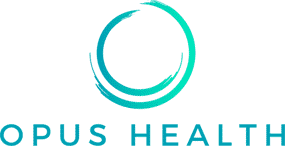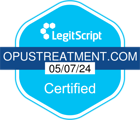There are 5 to 7 different categories of drug classifications that are crucial to addiction treatment and law enforcement. Read on to learn how drugs are classified and more.
What Are Drug Classifications?
A drug is a substance that influences your physical and mental state.
You may develop noticeable changes in your behavior, thoughts, and emotions after using these substances.
Authorities classify drugs into categories for use by health professionals, policymakers, and researchers.
These separations are useful to:
- Optimize addiction treatment
- Understand the trends in the use and abuse
- Formulate plans to help control abuse
- Take disciplinary actions if someone possesses, distributes, or manufacturing
Categorization
Society can categorize a substance based on its:
- High potential for abuse
- Known medical use
- The pattern of abuse (both past and current)
- Impact on individual and public health
- Long term scientific data
- Mental and physical effects
- Mechanism of action (how a drug acts on the body)
- Chemical structure
- Approved use
- Source (natural, synthetic, or semisynthetic)
7 Drug Classifications: Everything You Need to Know
According to the International Association of Chiefs of Police (IACP), there are seven drug classifications that can are generally abused.
CNS (Central Nervous System) Stimulants
Examples
Cocaine, crack cocaine, amphetamines, and methamphetamine (crank)
Street names: Bennies, black beauties, crosses, hearts, LA turnaround, speed, truck drivers, uppers, JIF, kibbles and bits, MPH, pineapple, r-ball, skippy, vitamin R
CNS stimulants increase your brain activity by altering the levels of specific brain chemicals called neurotransmitters.
their use causes increased alertness, attention, energy, and physical activity.
Other effects can include:
- Elevated blood pressure
- A rapid heart rate
- Increased breathing rate
Abuse of stimulants (both illicit & prescription drugs) is a significant public health problem in the United States.
In 2018, about 5 million American adults misused prescription stimulants. Similarly, the number of cocaine users increased from 36.7 million in 2009 to 40.2 million in 2019.
CNS Depressants
Examples
Barbiturates, anti-anxiety (Valium, Librium, Xanax, Prozac, and Thorazine), GHB (gamma hydroxybutyrate), Rohypnol
Street names: Barbs, phennies, reds, red birds, tooies, yellows, yellow jackets, bars, benzos, blues, candy, chill pills, french fries, downers, planks, sleeping pills, totem poles, tranks, zanies, and z-bar
Unlike CNS stimulants, these drugs decrease brain activity and cause drowsiness.
Other effects can include:
- Excessive sleepiness
- Lack of coordination
- Poor concentration
- Confusion
- Decreased blood pressure
- Slowed breathing
- Dizziness
- Dry mouth
According to the 2017 National Survey on Drug Use and Health, 1.5 million Americans misused CNS depressants.
Hallucinogens (Psychedelics)
Examples
LSD (lysergic acid diethylamide), magic mushrooms (psilocybin), mescaline (peyote cactus), MDMA (Ecstasy)
Street names: Acid, trips, shrooms, mushies, magics, cactus buttons
These substances cause hallucinations – experiencing things that don’t exist. For example, a user may hear or see things that are not there.
Other effects can include:
- Rapid, intense emotional swings
- Distorted senses, such as hearing colors and feeling sounds
- Feelings of detachment
- Distorted perceptions of time, direction, and distance
- Relaxation
- A rapid heart rate
- Dilated pupils
- Nausea
- Loss of appetite
Over 30 million Americans used hallucinogens in 2010. Psychedelic use was the highest in males and people aged 30 to 34.
Dissociative drugs
Examples
Ketamine, PCP (phencyclidine), dextromethorphan
Street names: Special K, KitKat, Angel dust, peace pill, ozone, DXM, red devil, Robo, Triple C
Dissociative drugs impair communication between different brain regions.
As a result, using them causes a feeling of detachment from your body or surrounding – dissociation.
Other effects can include:
- Anxiety
- Memory loss
- Shaking
- Numbness
- Confusion
- Dizziness
- Hallucinations
- Increased blood pressure and body temperature
- Panic
- Aggression
3.0 million Americans aged 12 or more have used ketamine at least once in their lifetime.
Narcotic Analgesics
Examples
hydrocodone (Vicodin), oxycodone (OxyContin), oxymorphone (Opana), morphine (Kadian), codeine, fentanyl, heroin (illegal)
Street names: Dillies, M, Miss Emma, Demmies, Dollies, Fizzies, Smack, H, Dope, China white
Opioids or narcotics are powerful pain relievers.
They work by acting on opiate receptors in the brain and spinal cord.
As a result, your brain does not feel pain as it should normally.
Other effects can include:
- Drowsiness
- Euphoria
- Slowed breathing
- Sleepiness
- Slowed heart rate
- Fainting
Over 2 million Americans abuse prescription narcotics and heroin each year.
Sadly, the rate of abuse and addiction is rapidly increasing.
Prescription opioid overdose killed over 20,000 people in 2016. Heroin overdose caused over 13,000 deaths in the same period.
Narcotics account for over 50 percent of all legal and illegal drug overdose deaths.
Inhalants
Examples
Toluene, paint remover, gasoline, paint thinners, hair sprays, nitrous oxide, amyl nitrite, lighter fluid
Street names: Laughing gas, snappers, poppers, whippets, bold, rush
Hundreds of household products and over-the-counter medicines contain chemicals that can be inhaled for getting high.
Inhalants can also cause:
- Confusion
- Irritability
- Poor concentration
- Dizziness
- Blurry vision
- Headache
- Slurred speech
- Fainting
- Sudden death
Over 20 million Americans (12 years and older) have used inhalants. Moreover, every year, over 700,000 use inhalants for the first time.
Cannabis (Marijuana)
Street names: weed, pot, Mary Jane, bud, ganja, herb, grass, hash, trees, hemp
THC – a mind-altering chemical in marijuana– is similar to a natural brain chemical called anandamide.
Thus, when you use cannabis, it acts on specific brain regions and affects communication between brain cells.
Euphoria and a sense of relaxation are the most common effects. Other effects can include:
- Seeing brighter colors
- Laughter
- Altered perception of time
- Anxiety
- Panic
Marijuana is one of the three commonly used drugs in the U.S.
The other two are tobacco and alcohol. In 2018, nearly 12 young adults used marijuana in the previous year.
Key Points
- Categorization helps addiction treatment and law enforcement.
- While there are many drug classifications, the most commonly used system contains seven drug categories.
FAQs
What is the difference between drug classifications and drug schedules?
Unlike the seven drug classifications, drug schedules involve only five classes of drugs under the Controlled Substances Act (CSA). The scheduled drugs include:
- Narcotics
- Depressants
- Stimulants
- Hallucinogens
- Anabolic steroids
What are different classes?
- Stimulants
- Depressants
- Narcotics
- Inhalants
- Cannabis
- Hallucinogens
- Dissociative anesthetics
What are the categories?
- Central nervous system depressants
- Central nervous system stimulants
- Opiates and Opioids
- Hallucinogens
- Marijuana
What are the classifications?
- Stimulants
- Depressants
- Hallucinogens
- Opioids
Seeking Treatment
There are many different types of drugs that are classified for different purposes.
What’s most important is that you have access to help if you find yourself becoming addicted to any of them.
Opus Health understands how important it is to have access to treatment, and as such can work with virtually any addiction or dependence, call 855-953-1345 to learn more about some of your options.













